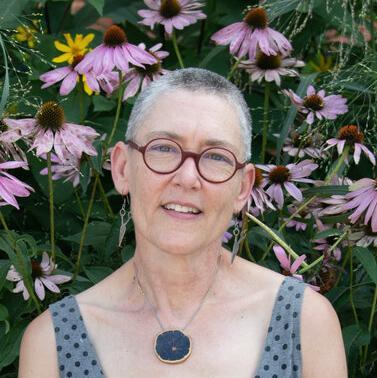.jpg)
A garden for the rusty-patched bumblebee
Creating habitat for native pollinators
INTERVIEW BY GAIL POPE
A Garden for the Rusty-Patched Bumblebee by Lorraine Johnson and Sheila Colla provides all the information gardeners need to take action to support and protect pollinators, by creating habitat in yards and community spaces, on balconies and boulevards, everywhere. With more than 300 native plants of Ontario and the Great Lakes region profiled in detail, along with sample garden designs, ideas for beautiful plant pairings and numerous tips for success, this fully-illustrated guide helps gardeners discover the crucial connections between native plants and native pollinators, and learn how to cultivate patches of pollinator paradise.

What was the inspiration for this book?
Johnson: Sheila and I originally wrote a shorter brochure (54 pages) called A Flower Patch for a Rusty-Patched Bumblebee and later created this book. The message is that we can do this work of creating habitat and it can be quite joyous and positive and life enhancing and we can do it anywhere: pots of native plants on a balcony, or a boulevard, a school ground, a community centre, it doesn’t matter. We didn’t want it to be about so-called private spaces and we wanted to acknowledge in the book that not everyone has access to a yard.
Why the rusty-patched bumblebee?
Colla: The rusty-patched bumblebee in the 70s and 80s was one of our most common bumblebee species and it was a generalist so we have records from hundreds of different plant species that it foraged off. I’ve been looking for it since 2004 and I saw it once in 2005 and then once in 2009 and those are the last two Canadian records and it hasn’t been seen since. It is a warning sign, that this species that was so common and such a generalist could decline under our watch so rapidly, it is time to pay attention to supporting wildlife through bees’ different relationships with plants.
What do native plants do to help wildlife species?
Johnson: We make the point in the book that one of the factors that contributes to the decline of some wildlife species is habitat loss, but also habitat fragmentation. We are hoping to inspire people to create these ribbons of connected habitat across the landscape to help species thrive. We profile more than 300 plants native to Ontario: trees, shrubs, annuals, perennials — all types of native plants. It’s a very practical book that has a lot of photos and inspirations; we even have design ideas for gardens.
Why are native bee species more at risk than managed species like honeybees?
Colla: Any managed animal has a ton of diseases associated with it but they can live with these disease levels because they have someone like a beekeeper available to give them medicine or to feed them extra food to eat if they are too sick to forage. Our wild bees don’t have that and we have evidence that many managed bee diseases do transmit to wild insects. There’s no way of knowing how hard they’re hit until those insects disappear, which then makes it too late to really save them. It’s important to separate the threats to native pollinators vs what’s impacting the European honeybee or other common livestock species.
What is your hope for this book?
Johnson: My hope for the book is that we help people understand some very complicated issues in a very straightforward, basic, and engaging way. I hope it also inspires people to action: planting a pollinator patch (even a tiny one!), or adding a few native plants to a non-native garden, which is mainly what people have. If we inspire people to add a few native plants to their garden then they will see all of the butterflies, bees, and birds that the native plants support. However, individuals can do all this but if we are in a place that doesn’t value the natural greenspace and just paves it over, we’ll still be in trouble. We can create habitat until we are blue in the face but the losses are going to be greater than the gains without political and policy changes as well.
 Lorraine Johnson lives in Toronto, Ont., and has been researching and writing about environmental issues for three decades. She is a community activist and advocate for protecting, supporting and growing the urban forest. Johnson is the author or editor of 14 books, including 100 Easy-to-Grow Native Plants for Canadian Gardens.
Lorraine Johnson lives in Toronto, Ont., and has been researching and writing about environmental issues for three decades. She is a community activist and advocate for protecting, supporting and growing the urban forest. Johnson is the author or editor of 14 books, including 100 Easy-to-Grow Native Plants for Canadian Gardens.
.jpeg&imgWH=1024) Sheila Colla is an assistant professor in the Faculty of Environmental Studies at York University in Toronto, Ont. She works closely with environmental non-governmental organizations and government agencies to implement the best available science in policy and land management. She co-authored The Bumblebees of North America: An Identification Guide and helps run the citizen science program Bumble Bee Watch.
Sheila Colla is an assistant professor in the Faculty of Environmental Studies at York University in Toronto, Ont. She works closely with environmental non-governmental organizations and government agencies to implement the best available science in policy and land management. She co-authored The Bumblebees of North America: An Identification Guide and helps run the citizen science program Bumble Bee Watch.